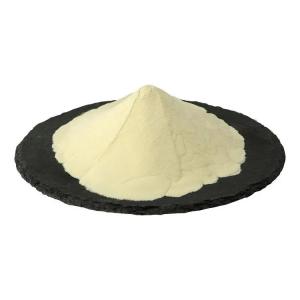Phosphatidyl serine is tested in frozen desserts.
Time:2025-08-01Phosphatidylserine (PS) is a phospholipid naturally found in the membranes of cells, particularly in the brain, and is often studied for its potential cognitive benefits. However, beyond its physiological functions, phosphatidylserine has found its way into various food products, including frozen desserts. This article explores the role of phosphatidylserine in frozen desserts, its functional benefits, and its impact on the food industry.
1. What is Phosphatidylserine?
Phosphatidylserine is a component of phospholipids, which are crucial building blocks of cell membranes. It plays a significant role in cell signaling, memory formation, and maintaining the integrity of cell membranes. Naturally, it is present in high concentrations in the brain, and is often extracted from soy or cabbage for use in dietary supplements and functional foods.
2. Role of Phosphatidylserine in Frozen Desserts
In the context of frozen desserts, phosphatidylserine serves multiple purposes:
Emulsifying Agent: Phosphatidylserine can act as an emulsifier, helping to blend fats and water, which is crucial in achieving the smooth and creamy texture characteristic of many frozen desserts.
Texture Improvement: PS contributes to the stabilization of the fat globules within the dessert, preventing ice crystal formation and thus enhancing the product’s texture. This results in a smoother mouthfeel, which is a desirable trait in ice creams, sorbets, and other frozen desserts.
Shelf Life Enhancement: By improving the structure of the frozen dessert, phosphatidylserine helps in maintaining the product's consistency and prevents separation over time, thus extending its shelf life. This can be particularly useful for manufacturers looking to preserve the quality of their products during storage and transportation.
Nutritional Fortification: Frozen desserts are often seen as indulgent treats with limited nutritional benefits. By incorporating phosphatidylserine, manufacturers can create functional desserts that not only provide a pleasurable eating experience but also offer potential cognitive benefits, such as improved memory and mental clarity.
3. Incorporation and Dosage
Phosphatidylserine is typically added to frozen desserts in the form of a liquid or powder. The amount used varies depending on the desired texture and the manufacturer's goals, but it is generally included in small quantities (typically less than 1% of the total formulation). Since it is fat-soluble, it integrates well into the lipid phase of the dessert formulation, where it performs its emulsifying and stabilizing functions.
4. Potential Benefits in Frozen Desserts
In addition to its functional roles, the inclusion of phosphatidylserine in frozen desserts may offer several potential benefits for consumers:
Cognitive Support: Given its known association with brain health, frozen desserts containing phosphatidylserine may appeal to individuals looking for products that support mental function and overall well-being.
Mood Enhancement: Phosphatidylserine has been linked to the regulation of cortisol levels, which may help reduce stress and improve mood. Incorporating this ingredient into desserts offers a way to enjoy a sweet treat while potentially benefiting from its stress-reducing properties.
Appealing to Health-Conscious Consumers: With the increasing demand for functional foods, the addition of phosphatidylserine may attract health-conscious consumers looking for more than just a tasty treat.
5. Market Trends and Consumer Demand
As consumers become more aware of functional foods, the demand for products that offer added health benefits is growing. The frozen dessert market, traditionally dominated by indulgent offerings, is also experiencing a shift toward healthier, fortified alternatives. Phosphatidylserine, being a popular ingredient in dietary supplements, fits well into this trend, offering manufacturers an opportunity to cater to the evolving needs of the market.
6. Challenges and Considerations
Despite its benefits, there are several considerations when incorporating phosphatidylserine into frozen desserts:
Taste Profile: Phosphatidylserine has a mild, slightly bitter taste that could affect the flavor profile of the dessert. Careful formulation and the use of complementary ingredients may be required to mask any unwanted aftertaste.
Cost and Sourcing: The cost of high-quality phosphatidylserine can be higher than that of traditional emulsifiers, which may impact the overall production cost of frozen desserts. Additionally, sourcing non-GMO and sustainably produced phosphatidylserine may add another layer of complexity to the formulation process.
Regulatory Considerations: As with any functional ingredient, manufacturers must ensure that their products comply with local food regulations and that any health claims made on packaging are supported by scientific evidence.
7. Conclusion
Phosphatidylserine is an intriguing ingredient in the frozen dessert industry, offering both functional and potential health benefits. Its role as an emulsifier and stabilizer enhances the texture and shelf life of frozen desserts, while its association with cognitive health appeals to a growing market of health-conscious consumers. As the demand for functional foods continues to rise, phosphatidylserine could become a key player in the development of innovative, nutritionally fortified frozen desserts that combine indulgence with health benefits.


 CN
CN





